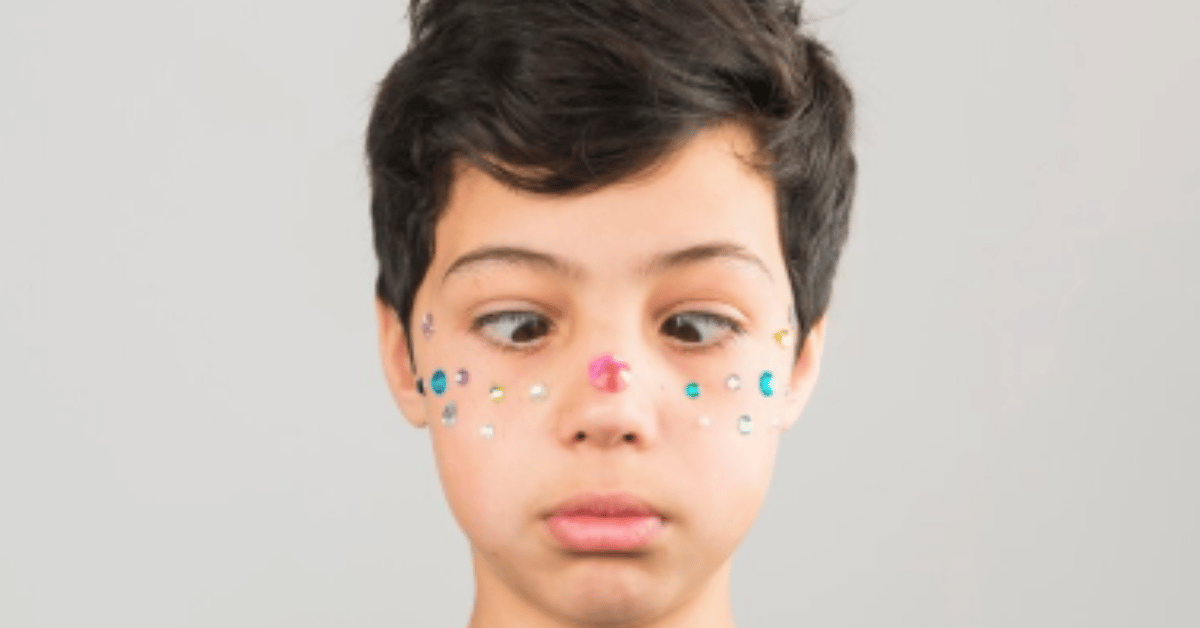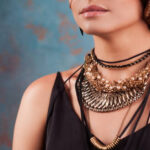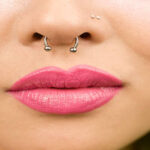There is a quiet magic in the way a button nose softens a face. It is small, rounded, and subtly turned upward never demanding attention yet somehow catching it. Within the first glance, it radiates an approachable warmth, a blend of innocence and sophistication. People have admired this gentle contour for centuries, in art, literature, fashion, and daily life. What makes a button nose so enduring in beauty culture is its balance: it never overwhelms other features but instead works in harmony with them. Across cultures and generations, this nose shape has been romanticized, photographed, painted, and even written into poems. In beauty conversations, it is often associated with youth, freshness, and kindness, creating an image that feels timeless. This article explores the deeper meaning of the button nose — its anatomy, history, cultural interpretations, modern styling, and even its subtle psychological influence — to understand why such a small curve holds such an outsized place in our imagination.
Anatomy of a Button Nose
A button nose owes its character to three main elements: bone structure, cartilage shape, and skin thickness. The nasal bridge is typically short to medium, with no sharp angles. The tip is softly rounded and may have a delicate upward tilt. The nostrils are rounded and often slightly narrow, which contributes to the compact, “button-like” effect. Skin plays a vital role — moderate thickness creates soft light reflections without harsh shadows. The cartilage in the lower portion of the nose gently supports the tip, allowing its distinctive lift. Unlike angular nose types, a button nose’s strength lies in proportion rather than prominence. This harmonious anatomy creates a naturally photogenic look that works well in portraits, editorial shoots, and candid photographs alike. As one portrait photographer once remarked, “The button nose is like a gentle comma in the sentence of the face — it pauses, then lets the eyes speak.”
The Button Nose in History and Art
Art history reveals the button nose in paintings, sculptures, and illustrations from many cultures. In European Renaissance art, painters often portrayed delicate, rounded noses on subjects meant to embody innocence and virtue. In Victorian-era portraiture, a button nose often signified refinement and modesty. East Asian art traditions, especially in certain historical periods, celebrated soft, subtle nose shapes as ideal markers of grace. Literature followed suit — authors frequently described heroines with “small, rounded noses” as pure and approachable. Even in folklore, characters possessing a button nose were often the kind-hearted protagonists, in contrast to villains with harsher facial features. This artistic symbolism has endured in film and media, where actors with button noses are still cast in roles meant to radiate warmth and relatability. The button nose, in essence, has been both a visual motif and a narrative shorthand for centuries.
Modern Popularity and Celebrity Influence
In modern culture, the button nose has been popularized by film stars, fashion models, and social media influencers. It appears across diverse ethnic backgrounds, demonstrating its adaptability in various beauty contexts. Makeup artists often highlight it subtly, allowing its shape to speak for itself. On platforms like Instagram and TikTok, contouring tutorials frequently aim to recreate its rounded tip and narrow bridge. Cosmetic trends also reflect interest in this nose shape — some people seek surgical refinement to create a button nose effect, while others opt for temporary enhancements with dermal fillers. Interestingly, beauty filters on social media often incorporate a button-nose-like contour, further embedding it in digital beauty culture. The allure lies in its perceived friendliness and its ability to soften facial expressions, making the wearer appear approachable even in still photographs.
Table 1: Key Features of a Button Nose Compared to Other Nose Types
| Feature | Button Nose | Aquiline Nose |
|---|---|---|
| Tip Shape | Rounded, slightly upturned | Sharp, downward curve |
| Bridge | Short to medium, smooth | Long, pronounced |
| Nostril Shape | Rounded, close-set | Oval, wider |
| Visual Impression | Youthful, soft, inviting | Strong, dramatic |
| Common Associations | Innocence, charm | Authority, sophistication |
The Psychology of Perception
Psychologists studying facial perception often find that rounded features trigger subconscious associations with warmth, trustworthiness, and youth. The button nose fits this pattern. People tend to interpret soft, curved lines as less threatening and more approachable. This is not to say that personality can be judged by appearance, but rather that first impressions are shaped by visual cues our brains process instantly. The button nose, paired with expressive eyes and a genuine smile, often creates a face that people naturally gravitate toward. As one cultural critic put it, “A button nose does not shout — it invites you closer.” This subtle psychological pull explains why this feature remains beloved even as beauty trends evolve.
Styling and Enhancing a Button Nose
While a natural button noses needs little enhancement, styling can highlight its charm. Soft lighting in photography enhances its rounded tip without creating deep shadows. Hairstyles that frame the face — such as soft bangs or loose waves — draw the eye upward, balancing the nose with the forehead and cheekbones. For makeup, light contouring along the sides of the nose paired with a gentle highlight on the tip can emphasize its shape. The goal is not to drastically change the feature but to celebrate it. Overly heavy shading risks losing the soft quality that defines the button nose’s appeal. Accessories also play a role: lightweight glasses with subtle frames complement rather than overpower its delicate structure.
Table 2: Makeup and Styling Tips for a Button Nose
| Technique | Effect |
|---|---|
| Side contour with soft brush | Slims bridge subtly |
| Highlighter on tip | Emphasizes rounded lift |
| Avoid dark shading on tip | Preserves youthful softness |
| Soft face-framing hairstyle | Balances facial proportions |
| Thin eyewear frames | Keeps focus on natural features |
Cultural Variations in Appreciation
Though the button nose is widely admired, its interpretation varies between cultures. In some Western contexts, it is celebrated for its youthful charm, often linked to “girl-next-door” beauty. In certain Asian aesthetics, a smaller nose tip is valued for its refined elegance. Meanwhile, in parts of the Middle East and Africa, button noses appear less frequently naturally but are often admired for their novelty and symmetry. The feature’s global appeal lies in its adaptability — it can blend with many face shapes and still look harmonious. This flexibility has allowed the button nose to remain popular even as cultural beauty standards shift over time.
Quotes That Capture the Essence
- “The smallest curve can hold the greatest grace.” — Anonymous
- “A button nose’s nature’s way of softening a gaze.” — Portrait Artist’s Journal
- “It does not command attention; it earns it quietly.” — Fashion Photographer’s Memoir
The Enduring Appeal
The button nose has survived centuries of changing beauty ideals because it speaks a universal visual language: balance, softness, and approachability. Whether seen in a centuries-old painting or on a modern influencer’s feed, it conveys a gentle harmony that resonates with human perception. Its anatomy may be simple, but its effect is profound — shaping how a face is read, remembered, and admired. In a world of ever-shifting trends, the button noses remains constant, a reminder that sometimes the quietest features leave the most lasting impression.
FAQs
1. What defines a button nose?
A button nose’s small, rounded, and often slightly upturned. It has a short to medium bridge, softly curved nostrils, and a gentle tip lift. Its proportions work harmoniously with other facial features, creating a balanced and approachable appearance. Unlike sharper or longer noses, it carries a youthful softness that naturally draws attention without overpowering the face.
2. Is the button nose naturally common?
The prevalence of button noses varies by population and genetic heritage. While more common in some ethnic groups, it appears in many backgrounds due to genetic diversity. Sometimes a person may inherit partial traits — like a rounded tip but a longer bridge — which still gives a soft and charming effect.
3. Why is the button nose often seen as attractive?
Studies in facial perception suggest rounded, soft features trigger subconscious associations with trust, kindness, and youth. The button nose fits this pattern, giving the impression of openness and warmth. It also frames the eyes naturally, making them more prominent in facial expressions.
4. Can makeup create a button nose effect?
Yes. Light contouring along the sides of the nose and a touch of highlighter on the tip can visually slim the bridge and enhance its rounded lift. The key is subtlety — heavy shading can make the nose look unnatural and lose its soft, youthful quality.
5. What hairstyles best complement a button nose?
Hairstyles that frame the face, such as soft bangs, side-swept layers, or loose curls, can balance proportions and gently guide attention toward the eyes and nose. Avoid overly heavy fringe styles that might overpower delicate features.











